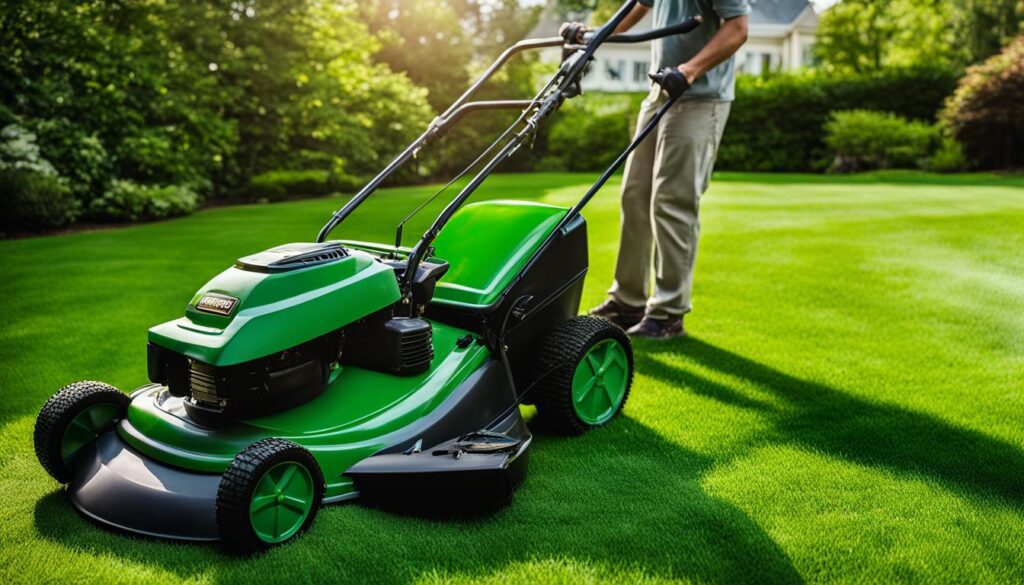When it comes to maintaining your lawn, the decision of whether to mulch or bag your grass clippings can have a significant impact. This article will explore the pros and cons of mulching and bagging and help you make an informed choice for your yard care strategy. We’ll provide factual data from multiple sources to help you understand the benefits and drawbacks of each method.
Grass clippings are an inevitable byproduct of regular lawn maintenance. The question is, what should you do with them? Mulching and bagging are two popular options with distinct advantages and disadvantages. By delving into each method’s pros and cons, you’ll be equipped to decide which method suits your needs and preferences. Let’s explore them in detail.
Pros and Cons of Bagging Grass Clippings
Bagging your grass clippings has several advantages. It prevents your yard from looking messy and gives it a professional appearance, increasing the curb appeal of your home. Bagging also reduces allergies for those who are sensitive to grass pollen, as the clippings are not left on the lawn to stir up more pollen. Additionally, bagging can prevent pests and diseases from spreading, especially if the grass is tall or already infected.
However, there are some drawbacks to consider. Bagging grass clippings increases the time and effort spent on yard work, as you’ll need to mow, rake, and dispose of the clippings properly. It requires extra equipment, such as a bagging attachment for your lawnmower or a separate bagging device. Bagging can also lead to increased waste, as you’ll have to find a suitable disposal method for the clippings.
Pros and Cons of Mulching Grass Clippings
Mulching your grass clippings can be a time-saving and energy-efficient method of lawn care. Instead of bagging and disposing of the clippings, you simply let them remain on the lawn. As the clippings decompose, they release valuable nutrients back into the soil, acting as a natural fertilizer for your lawn. This not only saves you money on purchasing additional fertilizers but also benefits the environment by reducing chemical usage.
In addition to providing free fertilizer, mulching can help hydrate your lawn. The grass clippings act as a natural mulch, retaining moisture in the soil and preventing evaporation. This can be especially helpful during hot and dry periods, as it reduces the need for frequent watering.
Another advantage of mulching is its ability to suppress weed growth. The layer of grass clippings acts as a protective barrier, preventing weed seeds from reaching the soil and germinating. This can result in a healthier and more weed-free lawn over time.
However, there are also some drawbacks to consider. Mulching requires frequent mowing, as leaving long clippings on the lawn can lead to clumping and an uneven appearance. It’s important to adjust your mower to a high cutting height and mow regularly to ensure proper grass chopping and prevent clumping.
Moreover, some homeowners may find the presence of grass clippings on the lawn visually unappealing. If you prefer a pristine and neat-looking lawn, mulching may not be the ideal choice for you. Additionally, excessive mulch application can contribute to thatch buildup, a layer of dead grass and organic matter that accumulates between the soil and grass blades. This can hinder water and nutrient absorption, impacting the overall health of your lawn.
When considering mulching as a lawn care strategy, it’s essential to weigh the pros and cons. While mulching offers time and energy savings, free fertilizer, improved hydration, and reduced weed growth, it requires proper mowing techniques and may not be visually appealing to everyone. Understanding these factors will help you make an informed decision that aligns with your preferences and the needs of your lawn.
Factors to Consider When Choosing Between Mulching and Bagging
When deciding between mulching and bagging, there are several factors to consider for your lawn care strategy. Cost, convenience, and appearance play a significant role in making the right choice.
Mulching is a cost-effective and convenient option as it eliminates the need for additional equipment and services. By leaving grass clippings on the lawn, mulching also has environmental benefits by reducing waste and preserving resources. The clippings decompose and provide natural fertilizer for your lawn.
On the other hand, bagging may be preferred for its cleaner appearance and better curb appeal. By removing the grass clippings, bagging gives your yard a tidy and well-maintained look. It also reduces the risk of clippings spreading and causing allergies or diseases.
Ultimately, the decision between mulching and bagging comes down to personal preference and the specific needs of your lawn. Consider factors such as cost, convenience, and appearance to determine the best option for you.
Tips for Effective Grass Mulching and Bagging
To maintain a healthy and vibrant lawn, proper grass mulching and bagging techniques are essential. Follow these lawn care tips to ensure effective mulching and bagging of your grass clippings:
- Maintain a sharp mower blade: A sharp mower blade cuts grass cleanly, resulting in smaller clippings that are easier to mulch or bag. Regularly inspect and sharpen or replace your mower blade as needed.
- Mow regularly: Avoid letting your grass grow too long between mowings. Mowing more frequently ensures shorter clippings, reducing the risk of clumping and making them easier to manage.
- Avoid mowing wet grass: Wet grass clippings tend to clump together, making it challenging to achieve proper mulching or bagging. Wait until the grass is dry before mowing for optimal results.
- Frequently empty the bag: When bagging your grass clippings, make sure to empty the bag regularly to prevent overfilling. Dispose of the clippings properly, following local guidelines for green waste disposal in your area.
- Bag clippings when lawn diseases are present: If you notice signs of lawn diseases, such as discoloration or patches of dead grass, it is important to bag your clippings. This helps prevent the spread of diseases to other areas of your lawn.
- Alternate between mulching and bagging: Consider alternating between mulching and bagging as part of your lawn care routine. Mulching provides natural fertilization, while bagging ensures a clean appearance. This strategy allows you to reap the benefits of both methods.
By following these grass mulching and bagging tips, you can maintain a well-groomed and healthy lawn throughout the year.
Is Mulching or Bagging Grass Better for Lawn Care?
When it comes to lawn care, the decision to mulch or bag grass can make a big difference. Mulching grass clippings can return essential nutrients to the soil, while bagging can improve the appearance of the lawn. Consider the specific needs of your lawn to determine which method is best for you.
Conclusion
After examining the pros and cons of mulching and bagging, it is clear that both methods have their benefits and drawbacks in lawn care. Mulching offers several advantages, including time-saving, free fertilizer for your lawn, and environmental friendliness. On the other hand, bagging provides a cleaner appearance and prevents the spread of diseases. When making a decision between mulching and bagging, it is important to consider factors such as cost, convenience, and appearance.
If you prioritize cost-effectiveness and convenience, mulching may be the preferred method as it eliminates the need for additional equipment and services. Furthermore, mulching reduces waste and preserves resources, making it an environmentally friendly choice. However, bagging may be preferred if visual appeal and curb appeal are important to you. Regularly disposing of clippings in bags can keep your yard looking tidy.
In some cases, striking a balance between mulching and bagging can be a good strategy. Alternating between the two methods can help you reap the benefits of both, allowing you to enjoy free fertilizer while maintaining a clean and visually appealing lawn. Ultimately, the decision on whether to mulch or bag your grass clippings depends on your personal preferences and the specific needs of your lawn. Consider your priorities and the factors discussed to make an informed choice that suits your lawn care goals.











